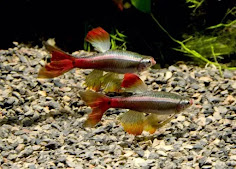
Community aquariums are everyone's favorites. No hobbyist can resist the urge to stock their tank with various fish species. Different colors, patterns, and fin types make community tanks eye-catching creations and make a centerpiece for any room they are kept in.
Even popular with beginners, community tanks require a well-planned setup and good care which sometimes can be confusing for beginners. Fish compatibility, appropriate swimming space, water chemistry, and many other parameters make a perfect community tank. So let's dig deeper and understand what all it takes to create a successful community tank.
Tank and Setup

More fish will need more space. Smaller tanks lead to competition for space among different species you will add, increased load on the filter (thus its efficiency), and can also induce aggressiveness and health problems in the fish. Thus make sure you are a decent size of tank to avoid such problems. The tank layout should be compatible with all your different fish species.
Longer, as well as taller tanks, work best for a community setup.
The tank can be divided into regions that can house the variety of species you are going to add. Adding dense plants in one part of the tank, floating plants in another part, and leaving some free swimming space in the remaining part of the tank can be helpful.
Water chemistry
Different species need slightly different water parameters. But this is one of the most neglected aspects while setting up a community tank, which leads to the death of one or more species in the tank.
Sometimes, warm water species (like Angelfish) are placed with cold water species (like goldfishes) which leads to the death of one of them due to the temperature difference. Some need higher pH while others need lower pH values. These variations should be kept in mind while you decide on the inhabitants of your tank. Species that have close parameters for the water can be kept together and huge differences in the water parameters should be avoided
The swimming levels

Compatibility
Filtration
Neon Tetra
Neon tetras are popular schooling fish with a very peaceful temperament. They make great mid-dwelling species and their dazzling blue coloration makes them stand out. They are extremely peaceful and slow swimming in nature. These should be housed in groups of 6+ and be given a good amount of swimming space. Appropriate temperature ranges from 22- 18 degree Celsius and pH of 4-7.5.
White cloud mountain minnows
This species is aging a schooling species similar to neon tetras. They have a good coloration with a bronze body and little red stripes on them. They have a peaceful nature.They should be housed in groups of 10+ and given a good rest area like heavy plantations. The appropriate temperature is 18- 24 degree Celsius and the pH of 6-8.
Mollies
Mollies are peaceful and hardy live bearers species, great for community tanks. They are available in a huge variety of fin types and colors ranging from simple black to orange, Dalmatian, peach, and white. This makes them one of the best species for a community tank.
They can be kept in groups. And will need a temperature range of 24-28 degrees and a pH of 7.5- 8.5.
Zebra Danios
Yet another popular species for community tanks are zebra danios. They are now also available in neon colors along with the classic white variant. Zebra danios give your tank a lively environment as these fish are extremely active and you will find them swimming through the tank almost the whole day. They are also super hardy and thus a great choice for beginners.
They should be housed in groups of 12 or more. Appropriate temperature ranges from 18-28 degree Celsius and pH of 5.5-7.
Guppy
Guppies are one of the most popular livebearers in the aquarium hobby. They come with many fin types, shapes, and a great color variety. Also, being hardy like the guppies are good for beginners. Their small size allows you to have more room for other species too.
The appropriate temperature is 22-28 degree Celsius.
Platies
Platies are livebearers similar to guppies in hardiness and similar to mollies in looks and size. Platies are very peaceful and available in many different colors.
The temperature range is 18- 22 degree Celsius and pH of 7-8.5.
Angelfish
Angles are one of the most good-looking fishes to have. Their unique body shape makes them stand out. Also, they give your tank, an tropical look. Angles can grow quite large ad thus should be added if the tank is large and tall enough.
Angles may sometimes show mild aggressiveness and thus must be monitored in the initial days. Also, do not suddenly add adult angels in a tank with tetras or other small species as angles may see them as food. They are a great choice for the mid-level of your tank.









